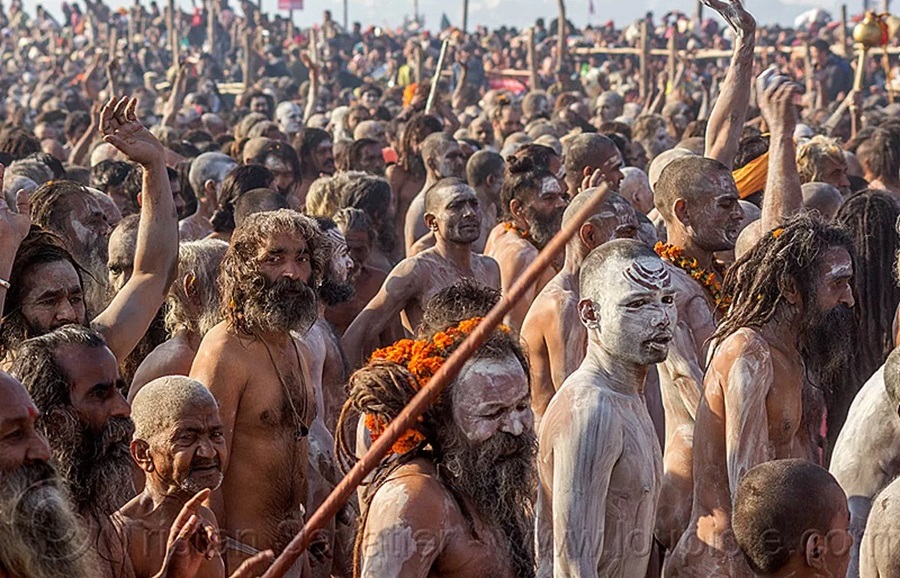Kumbh Mela 2025: Dates and Significance of the Sacred Gathering

Strong 8k brings an ultra-HD IPTV experience to your living room and your pocket.
The Kumbh Mela is one of the most significant and largest religious gatherings in the world, drawing millions of devotees to take part in a spiritual journey. Held every 12 years, it is a grand festival dedicated to Lord Shiva, wherein people from all walks of life congregate on the banks of sacred rivers to take part in ritual bathing. The next edition of this extraordinary event, Kumbh Mela 2025, promises to be a spectacle of faith, devotion, and cultural unity.
Kumbh Mela 2025: Dates and Locations
The Kumbh Mela is celebrated at four major locations in India: Prayagraj (Allahabad), Haridwar, Nashik, and Ujjain. Each of these sites is believed to have a deep connection with the mythical story of the "Kumbh," a divine nectar that fell to Earth during the churning of the ocean. The locations where this nectar touched the Earth are said to have received divine blessings.
For 2025, the Kumbh Mela will be held in Prayagraj, Uttar Pradesh, from January 14 to February 25, 2025. This location is particularly sacred because it is the confluence of the Ganges, Yamuna, and the mythical Sarasvati rivers. The Mela will occur at the Triveni Sangam (the meeting point of the three rivers), which is considered one of the holiest places in Hinduism.
The Importance of Kumbh Mela
The Kumbh Mela holds immense significance for millions of Hindus, with deep spiritual and cultural roots. Its importance can be understood through several key aspects:
Religious Significance: The Kumbh Mela marks the event where the nectar of immortality (amrita) was spilled from the pitcher (Kumbh) during the churning of the ocean (Samudra Manthan) by the gods and demons. According to Hindu mythology, the places where the nectar fell became sacred, and the Kumbh Mela is organized to honor this divine event. Bathing in the holy waters during the Mela is believed to purify the soul, wash away sins, and grant moksha (liberation from the cycle of rebirth).
Symbol of Unity: The Kumbh Mela is not just a religious event but a cultural phenomenon that transcends regional, social, and economic boundaries. It brings together people from all parts of India and beyond, offering a space for unity, tolerance, and collective devotion. The gathering is an expression of faith that showcases India's rich diversity in spiritual practices and religious traditions.
Astrological and Spiritual Beliefs: The timing of the Kumbh Mela is based on the position of celestial bodies. The Mela is celebrated when the Sun, Moon, and Jupiter align in the zodiac signs of Aries or Taurus, considered an auspicious time according to Hindu astrology. Devotees believe that participating in the Mela at this moment in time magnifies the spiritual benefits of the ritual bath.
A Gathering of Saints and Sages: The Kumbh Mela is also known for the presence of sadhus (Hindu ascetics), saints, and religious leaders, who make it a pilgrimage of not only the common people but also learned spiritual figures. The saints, often dressed in their distinctive robes, participate in processions and discourses, adding to the spiritual atmosphere of the event. Their guidance and blessings are considered invaluable to the participants.
Rituals and Festivals: During the Kumbh Mela, the festival is marked by a series of events and rituals, including holy dips, prayers, and religious discussions. The most notable event is the "Shahi Snan" or royal bath, where the most revered saints and devotees take a dip in the river at the most auspicious times. The Kumbh Mela is a time for religious leaders to perform sacred rituals and connect with their followers. Spiritual discourses, devotional songs, and folk performances also add to the celebratory atmosphere.
Global Significance: The Kumbh Mela has grown in stature over the years, attracting not only Indian devotees but also tourists, scholars, and spiritual seekers from across the globe. It is recognized by UNESCO as an Intangible Cultural Heritage of Humanity, underscoring its significance in fostering global awareness of Indian culture and spirituality.
How the 2025 Kumbh Mela Will Unfold
As the world emerges from global challenges such as the pandemic, the 2025 Kumbh Mela is expected to be even more momentous. Organizers are likely to enhance the infrastructure and safety measures, ensuring a smooth and enriching experience for attendees. The event will be an opportunity for the devotees to reconnect with their faith and with each other, after years of uncertainty.
The 2025 Kumbh Mela will be celebrated with grandeur, as millions of people will once again gather for what is often described as the world's largest peaceful gathering. The event will see vibrant processions, fairs, and exhibitions, creating a carnival-like atmosphere. It will be a time of renewal, hope, and spiritual rejuvenation.
Conclusion
The Kumbh Mela is a celebration of faith, spirituality, and cultural heritage. For those who participate in the 2025 Kumbh Mela, it will be an opportunity to wash away past sins, seek spiritual enlightenment, and become part of a tradition that stretches back thousands of years. It remains a testament to India's profound religious traditions, its diversity, and its ability to bring people together in unity and devotion. Whether you are a devout follower or a curious traveler, the Kumbh Mela promises an experience that will stay with you for a lifetime.
Note: IndiBlogHub features both user-submitted and editorial content. We do not verify third-party contributions. Read our Disclaimer and Privacy Policyfor details.


